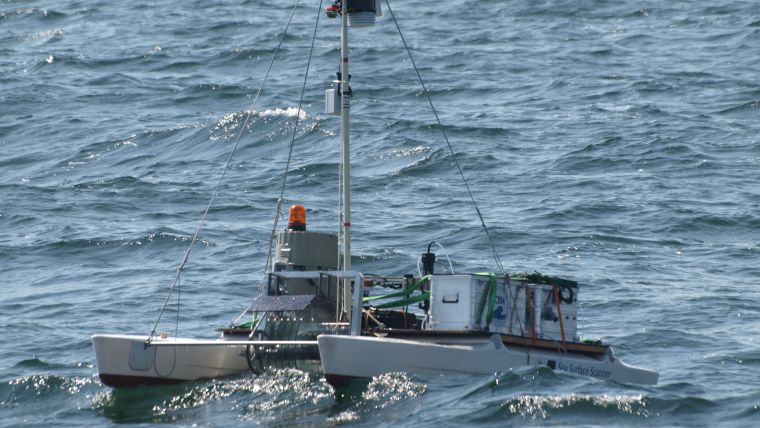First Take-off of Unmanned Aircraft Scheduled from RV 'Falkor'
RV 'Falkor' has left Darwin, Australia, to explore the poorly understood air-sea interactions across the Indian and Pacific Oceans. The team of sea surface experts and marine geochemists on the expedition will use newly developed technologies to examine the ocean’s role in exchange processes. A variety of tools will be used including unmanned aerial systems (UASs) and a remote-controlled kayak. The unmanned aircraft with a wingspan of 3.6 metres will take off from research vessel 'Falkor' to scan the sea surface with cameras and highly sensitive thermal and optical measuring instruments.
This research supports understanding the ocean’s role in global climate change. The exchange of energy and matter between the atmosphere and the ocean are particularly onerous requirements, and have largely been neglected in climate research. Chief Scientist Dr. Oliver Wurl, from the University of Oldenburg, Germany, and his international team of scientists from Germany, the United States, and United Kingdom plan to gain new insight during this 31-day expedition.
The aircraft can remain in the air between four and six hours tracking hundreds of kilometres, with different sensors. These UAS are have never been used for research purposes on a ship, according to Oliver Wurl.
Kayak to Survey and Taking Samples
The research team will also be deploying a remote controlled catamaran or kayak developed by the Institute for Chemistry and Biology of the Marine Environment at the University of Oldenburg. The kayak will scan the sea surface using sensors and taking samples which will later be analysed in the laboratory on Falkor. In addition to the aircraft and kayak, the scientists will use autonomous buoys to measure gas exchange processes between ocean and atmosphere. With the aid of the buoy, the change of carbon dioxide (CO2) over a period of 20 minutes can be recorded. The aim is to describe the absorption of greenhouse gases through the surface of the ocean better.
The scientists are to publish blogs and videos over the 31 days of their adventure. The team will also connect with classrooms across the world on 19 October as they share about the science and careers at sea through a live Google Hangout with Earth Echo International.

Value staying current with hydrography?
Stay on the map with our expertly curated newsletters.
We provide educational insights, industry updates, and inspiring stories from the world of hydrography to help you learn, grow, and navigate your field with confidence. Don't miss out - subscribe today and ensure you're always informed, educated, and inspired by the latest in hydrographic technology and research.
Choose your newsletter(s)
























